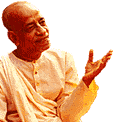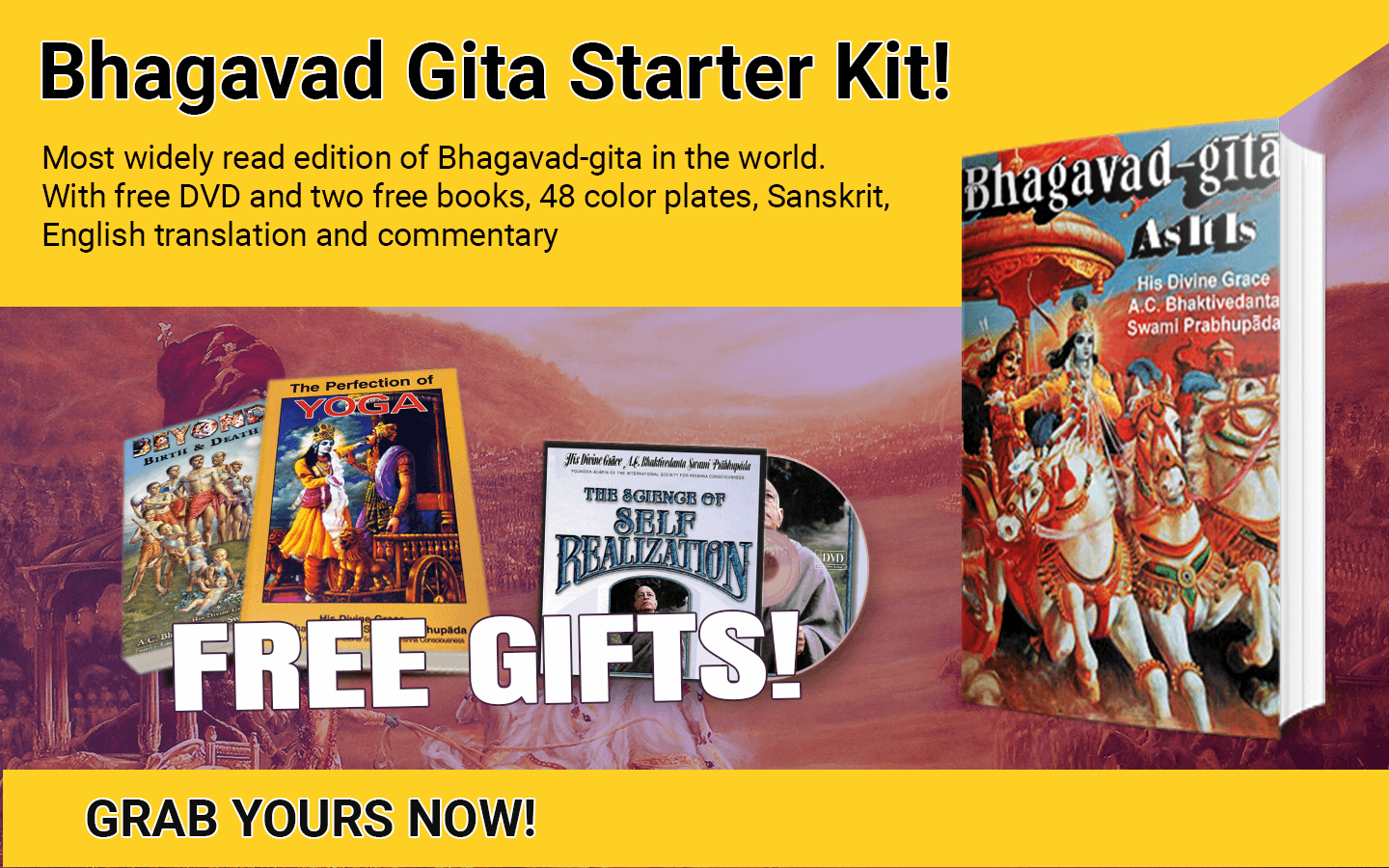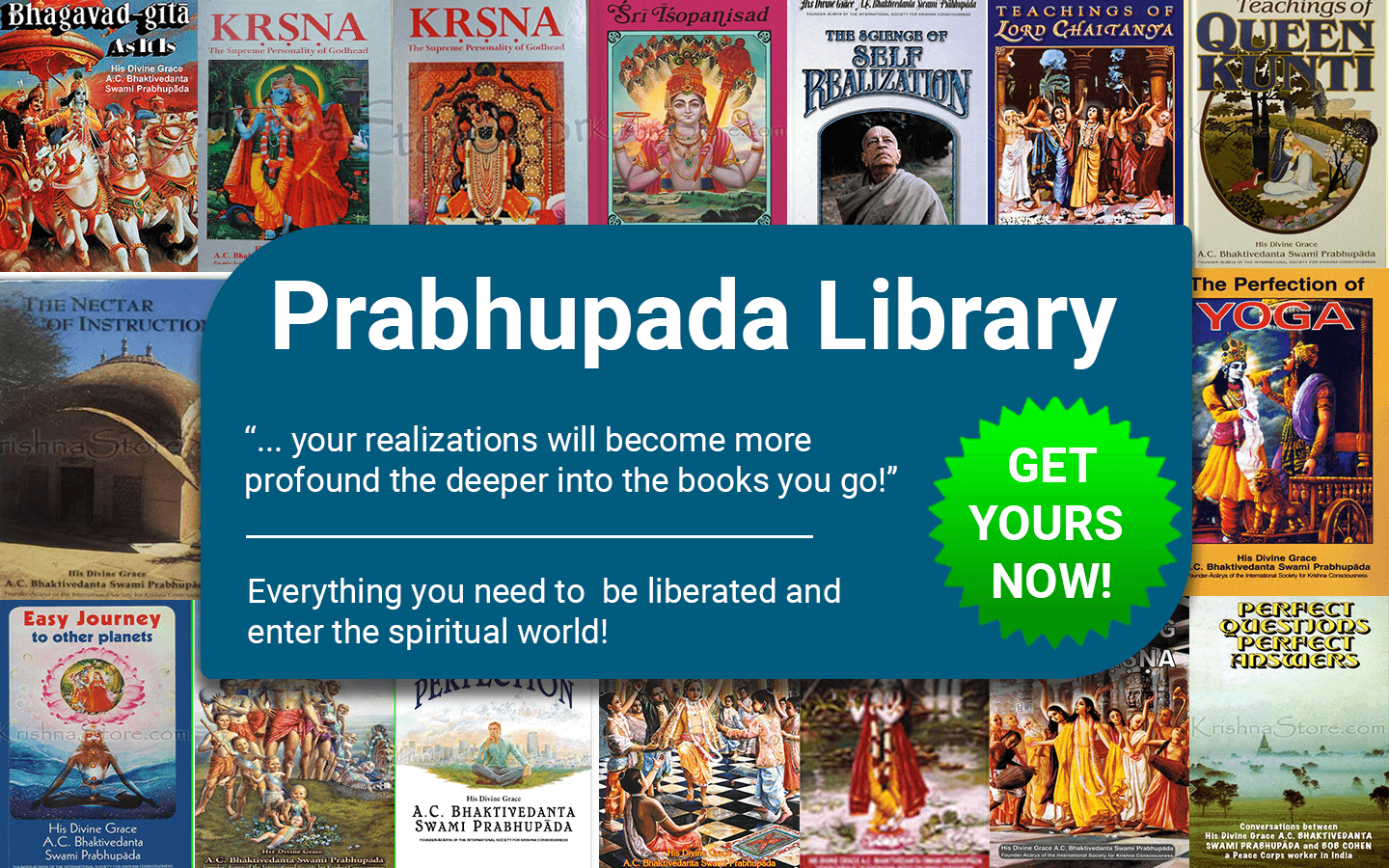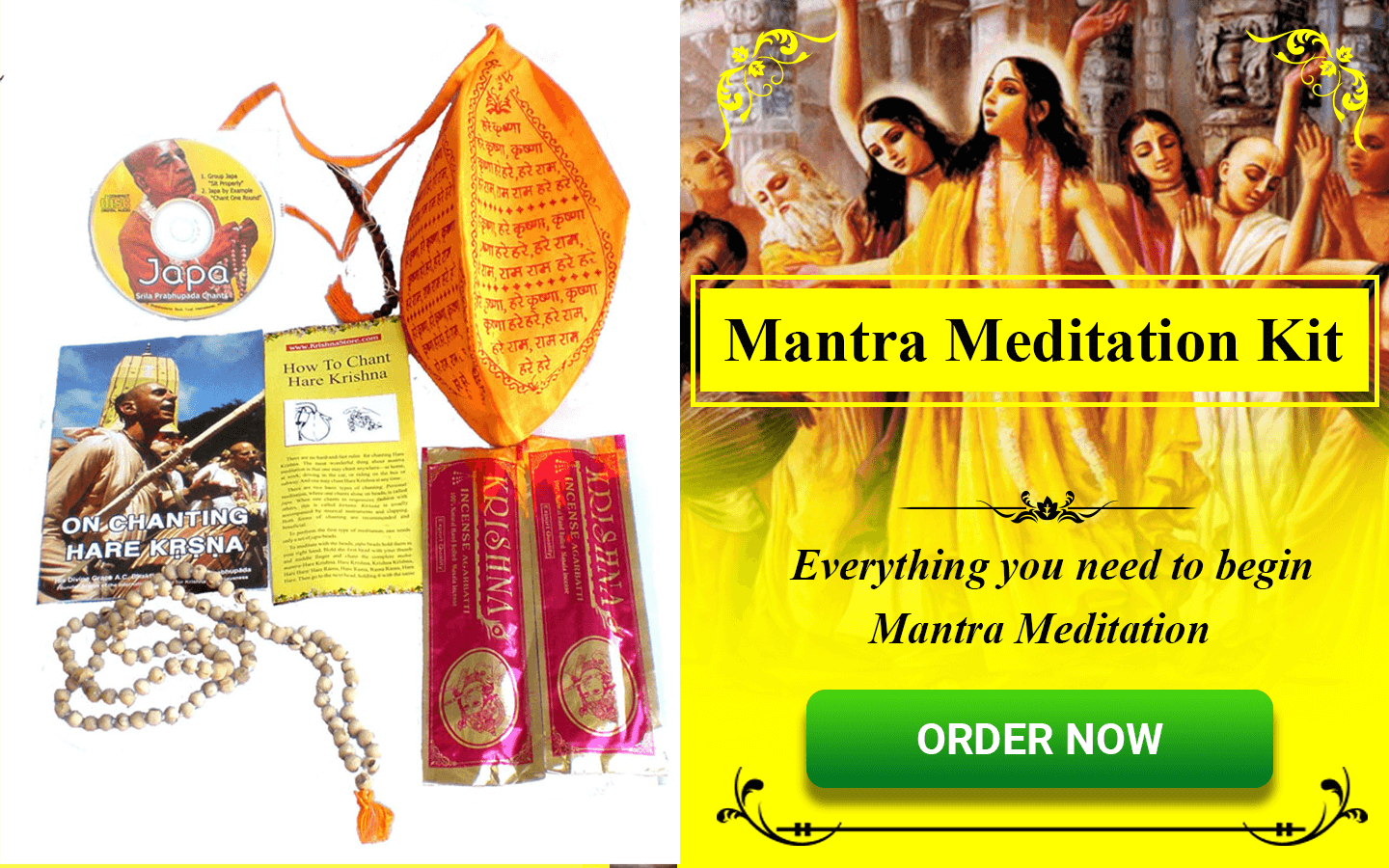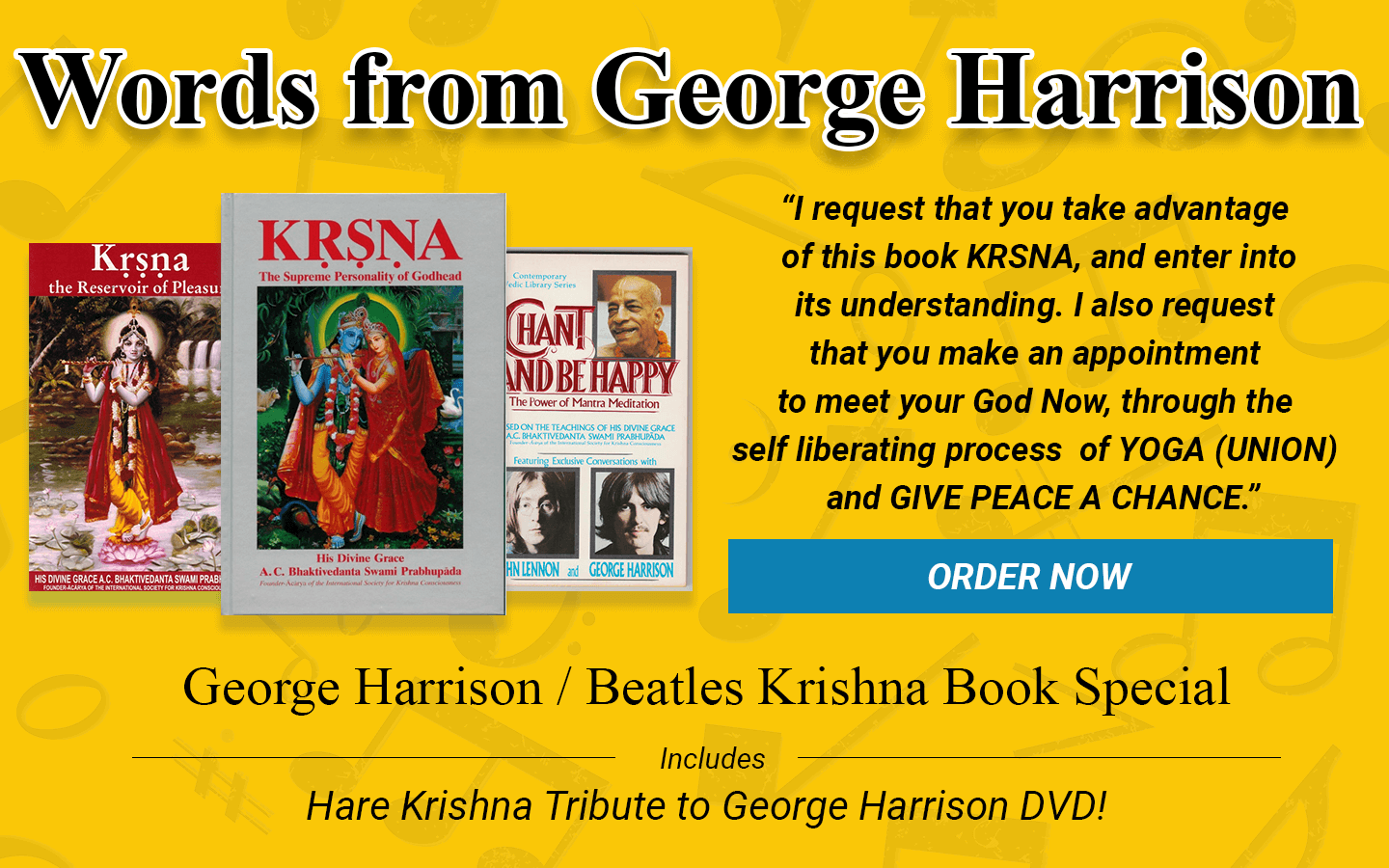Chapter 11: The Universal Form
Bg 11.46
TEXT 46
kiritinam gadinam cakra-hastam
icchami tvam drastum aham tathaiva
tenaiva rupena catur-bhujena
sahasra-baho bhava visva-murte
icchami tvam drastum aham tathaiva
tenaiva rupena catur-bhujena
sahasra-baho bhava visva-murte
SYNONYMS
kiritinam—with helmet; gadinam—with club; cakra-hastam—disc in hand; icchami—I wish; tvam—You; drastum—to see; aham—I; tatha eva—in that position; tena eva—by that; rupena—with form; catur-bhujena—four-handed; sahasra-baho—O thousand-handed one; bhava—just become; visva-murte—O universal form.
TRANSLATION
O universal Lord, I wish to see You in Your four-armed form, with helmeted head and with club, wheel, conch and lotus flower in Your hands. I long to see You in that form.
PURPORT
In the Brahma-samhita it is stated that the Lord is eternally situated in hundreds and thousands of forms, and the main forms are those like Rama, Nrsimha, Narayana, etc. There are innumerable forms. But Arjuna knew that Krsna is the original Personality of Godhead assuming His temporary universal form. He is now asking to see the form of Narayana, a spiritual form. This verse establishes without any doubt the statement of the Srimad-Bhagavatam that Krsna is the original Personality of Godhead and all other features originate from Him. He is not different from His plenary expansions, and He is God in any of His innumerable forms. In all of these forms He is fresh like a young man. That is the constant feature of the Supreme Personality of Godhead. One who knows Krsna at once becomes free from all contamination of the material world.
Copyright (c) 1972 by His Divine Grace A.C. Bhaktivedanta Swami Prabhupada

